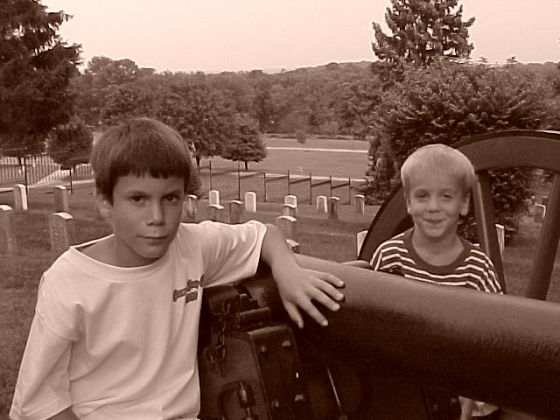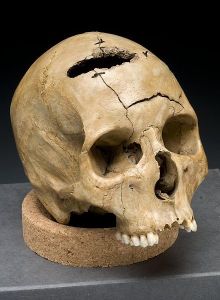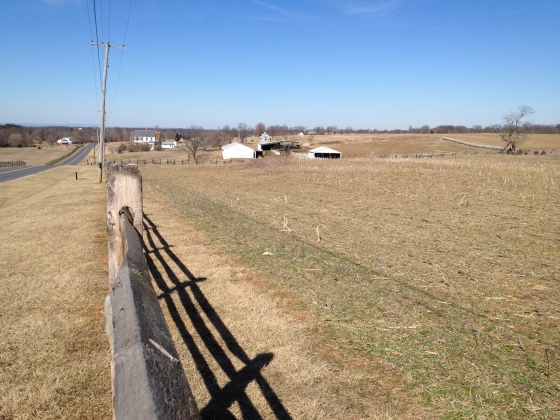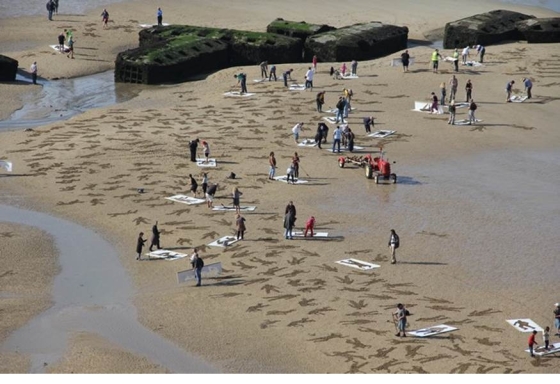On this date of November 19, 1863, the famous Gettysburg Address was given by Abraham Lincoln for the dedication of the cemetery there. Though not generally well-received at the time, it remains probably the most famous speech in American history.
The primary presenter that day was the foremost orator of the time: Edward Everett. After an hour and fifty-seven minutes of speaking (I hope some of my church people read this!), Lincoln stood to give his “few appropriate remarks” in accord with the request of the planners.
Lasting but two or three minutes, Lincoln himself was uni

Copy of the Address in the cemetery at Antietam
mpressed … saying to a friend afterward, “That speech won’t scour; it’s a flat failure and the people are disappointed.” (Scour is a word from agricultural plowing – when the mud would stick to the plow board rather than “scour” off of it.)
Two different views of his remarks were recorded the next day in Chicago newspapers, with the Chicago Tribune predicting (correctly) that it would “live among the annals of men.” However The Times stated it to be “silly, flat, and dishwatery.”
Everett – the master orator – was impressed, writing to Lincoln the next day to say, “I should be glad if I could flatter myself that I came so near the central thought of the occasion in two hours as you did in two minutes.”
Doubleday and Gibbon at the Address
I would like to include some Doubleday remarks, but I don’t really know of any. Though an admirer of Lincoln from the earliest time, Doubleday never really wrote anything about the Address. He was there; that is known for sure – having taken the same train from Washington as the President. In the very excellent book on the Address entitled “The Gettysburg Gospel” by Gabor Boritt, he wrote of the parade:
“The Marine Band stood at the head, then the Second U.S. Cavalry, followed by Generals Darius Crouch and Julius Stahel, with staffs, more cavalry, and artillery. Next, on horseback, came the president and cabinet members, escorted by the marshals and Generals Abner Doubleday, John Gibbon, and Horatio Wright …”
Both Doubleday and Gibbon had been wounded at Gettysburg on the third day and were in the final stages of recovery. Doubleday had been hit in the back of his neck by a shell fragment – knocking him off over the head of his horse. Gibbon had been shot in the left shoulder.
Gibbon wrote of his experience at the dedication ceremony – displaying a bit of Attention Deficit Disorder by going for a walk while the main speech went on and on.
“… when the day appointed for the celebration of the victory of Gettysburg approaching, I felt an irresistible desire to be present and look once more upon the scene of the battle. Accompanied by Lt. Haskell who, in the meantime, had joined me from the field, I proceeded to Gettysburg where on Nov. 19 an immense concourse of people had assembled attracted by the occasion, the presence of Pres. Lincoln and Mr. Everett’s oration. On a platform erected in the cemetery ground I listed to a part of Mr. Everett’s oration but becoming impatient to look over the field, went with a small party to my position in the battle near the angle in the wall, describing to eager ears what I had witnessed there … We then returned in time to hear Mr. Lincoln’s touching address. The visit to the battlefield was exceedingly interesting.
Controversy Surrounding Gettysburg – Always …
The dedication and address itself was knocked out the headlines soon after it happened by the dramatic events of Lookout Mountain in Chattanooga. And the 100th anniversary was soon trumped by the assassination of Kennedy. The 150th will perhaps gain appropriate attention, though President Obama has not chosen to be there. And again, this creates controversy; and it seems everything about Gettysburg does that.
Penning some recent words on this (from an editorial in the Gettysburg Times) was Allen Guelzo … and here are some excerpts in his inimitable style of writing:
“So, he’s not coming.”
“The news that President Obama has decided not to accept the invitation to speak on November 19th for the150th anniversary of the Gettysburg Address has generated a surprising volume of irritation. … After all, many people were convinced that no sitting president would want to miss the opportunity to step into the sesquicentennial shoes of Abraham Lincoln at Gettysburg. Especially a president who had identified himself so closely with Lincoln during his first run for the presidency in 2008.”
“We were wrong. And so, merchants who had banked steeply on getting a second bang for the sesquicentennial buck this year can cancel those orders. … Never mind that the Gettysburg battle sesquicentennial marks the most critical moment in our nation’s history, or that the Gettysburg Address sesquicentennial marks the biggest moment in American political speech.” …
“It’s only fair to say that Mr. Obama has, of course, had a few other things on his mind than sesquicentennials. Second terms are happiest for presidents on inauguration day, but have a nasty historical habit of spinning downward after that.” ….
“And in all fairness to Mr. Obama, no other living presidents have bestirred themselves sufficiently to plan on being in Gettysburg on November 19th. Not Carter. Not Clinton. Neither Bush 41 nor 43.
“At the same time, though, it’s also true that Abraham Lincoln had far better reasons for dodging the first dedication in Gettysburg in 1863 – but didn’t. Staring a civil war in the face, he took no vacations from Washington, stayed at his desk even when his family was relaxing north of the capital at the Soldiers’ Home, and rarely even left the confines of the District of Columbia except to visit the troops in Virginia. Nevertheless, Lincoln went out of his way to be at Gettysburg …” …
“One hundred and fifty years have not made their sacrifices stale, nor have any of us somehow earned a free pass to ‘forget what they did here.’ Gettysburg deserves better from its president. So do these honored dead.”
The picture is of the two youngest of my five boys – taken in the cemetery in July of 2000. These guys are both in college now!








![IMG_1010[1]](https://enfiladinglines.files.wordpress.com/2014/02/img_10101.jpg?w=300&h=225)











![IMG_0907[1]](https://enfiladinglines.files.wordpress.com/2013/11/img_09071.jpg?w=300&h=225)